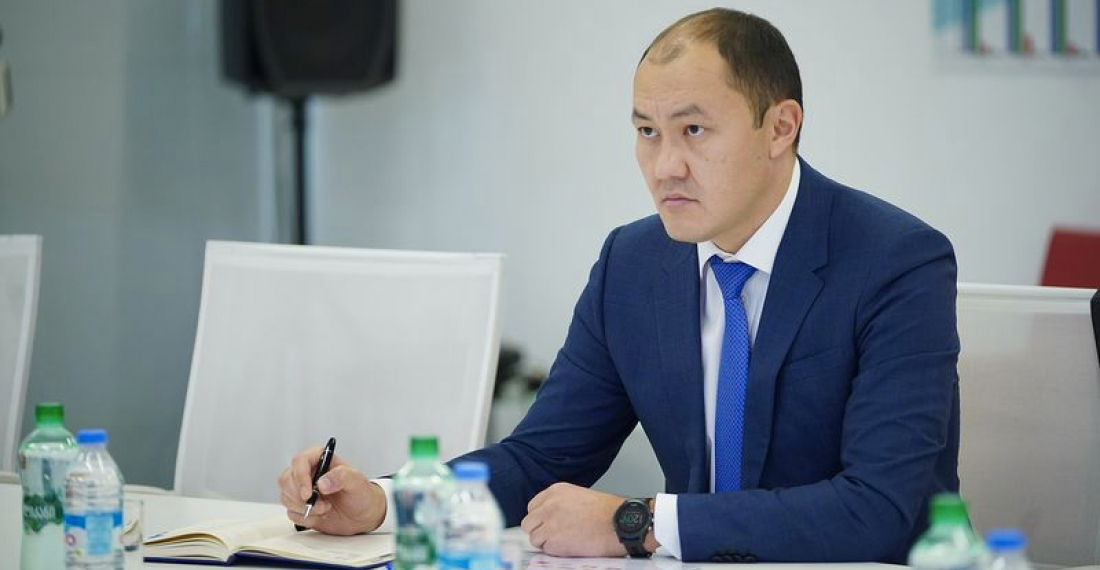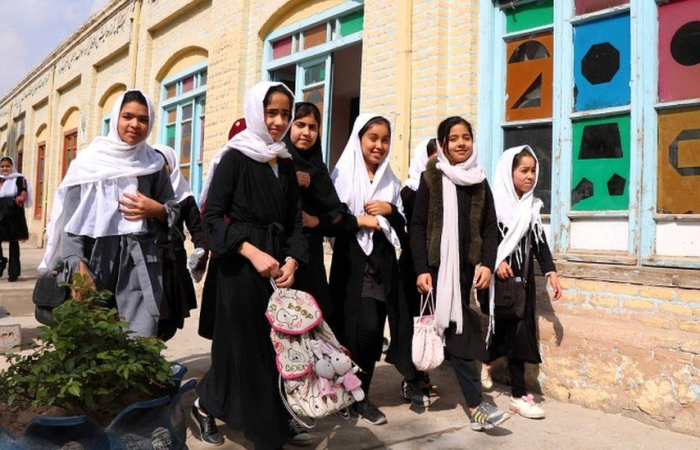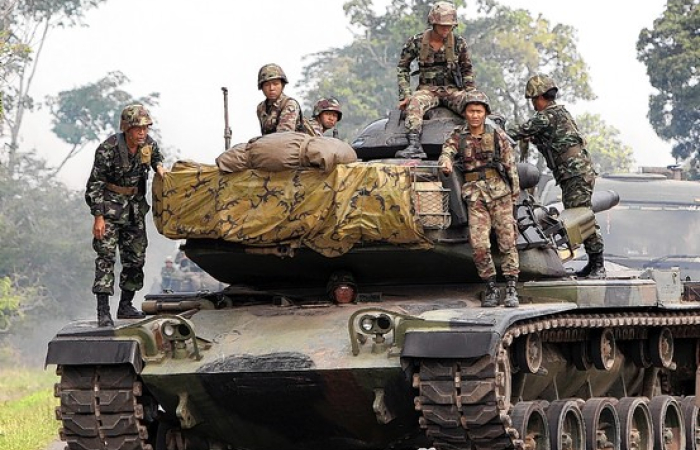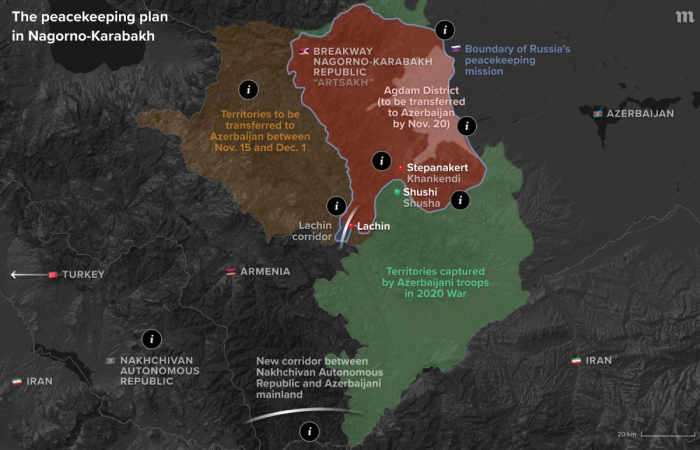The Inter-Governmental Commission TRACECA is a regional framework aimed at facilitating transport on the West-East corridor Europe-Caucasus-Asia. Initially an initiative of the European Union, working with the emerging post-Soviet states of the Caucasus and Central Asia, IGC TRACECA now has thirteen members: Azerbaijan, Armenia, Bulgaria, Georgia, Iran, Kazakhstan, Kyrgyzstan, Moldova, Romania, Tajikistan, Turkey, Ukraine and Uzbekistan. They are each represented on the Permanent Secretariat by the National Secretary, and the Secretariat is led by a Secretary General. commonspace.eu interviewed Asset Assavbayev, the current Secretary-General, on the work of TRACECA, and the challenges and opportunities ahead.
related content: Editorial: TRACECA poised to play an increasingly important role in the connectivity Europe-Caucasus-Asia
**********
TRACECA is an idea that emerged in the 1990’s as an EU initiative to connect Europe, the Caucasus and Central Asia. It has since evolved, and ownership now is with the governments of the region. Can you tell us how the idea of the TRACECA Intergovernmental Commission evolved, and how TRACECA is presently governed?
The TRACECA – the transport corridor Europe-Caucasus-Asia – aims to develop the transport corridor West-East, originating in Europe, passing through the territory of the countries of the Black Sea, the South Caucasus, the Caspian Sea and Central Asia. It is important to point out that the TRACECA corridor also connects parts of the Trans-European transport networks within the EU, the Pan-European transport corridors, especially the Black Sea Pan-European Transport Zone and the new Silk Road in Asia.
Until 1998, TRACECA existed as an EU project, gradually evolving into an international structure designed to realise the original goals of developing trade relations through the creation of favourable conditions for transport.
An important historical event in the development of TRACECA was the international Conference "TRACECA-Restoration of the Historic Silk Road", held on 8 September 1998 in Baku and organised with the support of the then TACIS-TRACECA programme of the European Union. The conference was attended by the presidents of Azerbaijan, Bulgaria, Georgia, Kyrgyzstan, Moldova, Romania, Turkey, Uzbekistan and Ukraine; heads of government ministries of transport and experts from 32 countries; and representatives of the European Commission, as well as 12 representatives of international organisations. The most important result of this Conference was the signing of the Basic Multilateral Agreement on International Transport for the Development of the Europe-the Caucasus-Asia Corridor (MLA). Institutional structures were also defined there, designed to fulfil the goals stipulated in the MLA.
In 2000, the first meeting of the TRACECA Intergovernmental Commission (IGC), established under the MLA, was held to regulate and resolve the issues related to the implementation of its provisions. Since that time, 14 meetings have been held, which, uniting the heads of the sectoral ministries, have made a significant contribution to the development of transport along the TRACECA corridor.
Since 2001, the Permanent Secretariat of the IGC TRACECA has been functioning as an executive body of the IGC in Baku, Azerbaijan. The Permanent Secretariat has representative offices in each of the participating countries that co-ordinate activities at the national level.
This structure has continued to function effectively, and we are now in the process of building on its success.
Connectivity is at the heart of TRACECA’s mission. What are the current priorities of TRACECA? How is the work being conducted?
The main goal of TRACECA is to create an international transport corridor that meets the requirements of the 21st century, and therefore is competitive both in terms of transportation cost and delivery time.
To this end, we are working on such promising areas as:
- harmonisation of national standards, requirements and rules regarding the implementation of transportations along the TRACECA corridor;
- management and simplification of border crossing procedures;
- digitalisation, transfer of processes and documents into electronic format;
- development of multimodal transport in accordance with the best practices in the world;
- improving the safety of transportation;
- attracting container traffic to the TRACECA corridor to increase the volume of rail transport; and others.
Among the latest initiatives, in light of the current situation in the world, the development of "Harmonized Conditions for the Carriage of Goods Under the Spread of the Coronavirus Infection (COVID-19) Pandemic" can be highlighted as an example of how TRACECA can move speedily to address new challenges and opportunities.
In order to increase the competitiveness of the corridor and liberalise road transport, the TRACECA countries concerned have agreed on the text of the Agreement on Single Transit Permit TRACECA proposed by the Permanent Secretariat, which is currently undergoing domestic approval procedures.
Implementation of the provisions of the Agreement will simplify the process of obtaining and applying permits by national carriers, and will also reduce the number of permits required for transit traffic.
For example, if 4 permits are required for transportation from Tajikistan to Turkey under current conditions, then after the implementation of the provisions of the Agreement, the carrier will need only 1 electronic permit for transit through the territories of 4 countries. This will certainly reduce the time and cost for obtaining permits.
In parallel, along with the ongoing work on the implementation of digital transit permit, we are working on the digitalisation of the current multilateral permit system, which has been successfully applied since 2016.
These initiatives will be carried out within the framework of the practical implementation of the developed TRACECA Digitalization Concept. With the support of the TRACECA countries, in the near future we plan to create the TRACECA information system. Within the framework of this system, work will be carried out on the usage of the Single Transit and Multilateral Permits, and a mobile application for participants in the transportation process will be created, which will contain up-to-date information on transportation by road, rail and sea transport. It is planned to bring into this system both authorised bodies in the field of issuing permits and state control bodies.
Harmonisation of requirements for road vehicles is also one of the relevant initiatives of the Permanent Secretariat.
In 2020, TRACECA experts prepared an analytical review of the requirements for the mass and dimensions of vehicles, which showed that the requirements in the countries are significantly different. This leads to the fact that road carriers are obliged to ensure compliance with all requirements and to underload vehicles. In this regard, the Permanent Secretariat invited the countries to adopt uniform requirements, which are as identical as possible to the requirements of the European Union within the framework of a new Agreement on Mass and Dimensions of vehicles, the draft of which is under consideration by the countries concerned.
Together with the International Road Transport Union (IRU), active work is underway to switch to eTIR, a number of bilateral pilot transportations have been performed among the TRACECA member countries.
Today, also 8 out of 13 countries of the TRACECA corridor have joined the Additional Protocol to the UN Convention on the Contract for the International Carriage of Goods by Road. In this direction, pilot transportations using e-CMR have already taken place in the countries of the European Union, there are information systems that allow the use of electronic consignment notes. Therefore, we are actively working on the issue of using the electronic consignment note on the territory of the countries.
Together with the International Center for Transport Diplomacy (ICTD), the Intergovernmental Union of Road Workers (MSD) and the competent authorities of the corridor countries, the TRACECA team is working on a new initiative called the Global Transit Document (GTrD). This type of electronic document is developed on the basis of blockchain technologies that are successfully used in the world, and allows the transportation of containers regardless of the type of transport. At the moment, a draft of the GTrD Concept has been prepared, there is support and interest from the World Customs Organization, IBM and international financial institutions. Just today, on 8 June, we are holding a presentation of this project. We plan to carry out pilot transportation, and in 2022 present the final results of the work.
We also pay much attention to the development of rail transport. In particular, we have prepared a draft Concept for the Development of Container Transport until 2030, which covers an analysis of trade relations between the countries of Europe and Asia, the current situation in the organisation of regular container traffic, a forecast of traffic volumes until 2030, as well as recommendations for increasing the competitiveness of container traffic in the territories of the TRACECA countries. Our analysis shows that the transportation potential for today is about 760 thousand TEU containers.
In the field of maritime transport, we attach great importance to improving the safety of navigation and increasing traffic volumes, since the Black and Caspian Seas are the connecting link of the TRACECA multimodal corridor. In this direction, the PS is working to develop common approaches to determining the cost of services for the carriage of goods by sea routes, and also continues to assist countries in the implementation of international norms and practices in the field of maritime transport, inland waterways, security, environmental protection and port infrastructure.
Among other initiatives, I would like to point out that the Permanent Secretariat is also working on the implementation of electronic queues at borders, improving aviation security and qualifications in the field of civil aviation, harmonising the requirements for vehicles performing international cargo transportation, raising awareness of the procedures for transporting large-sized indivisible loads, developing uniform approaches to determining a competitive price for transportation by rail and sea transport, etc.
How does the TRACECA Secretariat function?
The Permanent Secretariat is the executive body of the IGC TRACECA and has national representations in all countries participating in the Basic Multilateral Agreement. The main task of the Secretariat is to ensure the implementation of the provisions of the MLA, decisions of the IGC, as well as strategic and programme documents adopted within the TRACECA framework.
For that, a work-plan of the Permanent Secretariat is developed annually, according to which the co-ordination of activities and the achievement of the set goals are carried out. Today we are actively working to identify problems and issues related to the implementation of the MLA, conducting research to find the ways to address these issues and offer solutions to the TRACECA member states.
The Permanent Secretariat also provides substantive and organisational preparation for all events held under the auspices of TRACECA - these are meetings of the IGC, PS, ad-hoc Working Groups and other events aimed at improving connectivity between countries. In its activities, the PS also actively co-operates with international organisations; there are more than 10 memorandums of understanding that serve as the basis for these relations.
In 2005, the MLA member states entered into an Agreement on Joint Financing of the Permanent Secretariat of the IGC TRACECA, in which they agreed to finance the Secretariat activities on a parity basis.
What is the state of relations between TRACECA and the European Union?
Throughout the entire period of its existence, the Permanent Secretariat has developed close co-operation and active dialogue with the structures of the European Union. To date, 85 projects have been funded under the EU-TRACECA Program, with a total amount exceeding €187 million. The implemented projects helped to attract large investments from international financial institutions and more than 40% of the budget was directed to support and develop the transport infrastructure of the corridor.
In this regard, it is necessary to pay tribute to the European Commission, which places great emphasis on TRACECA. In order to stimulate the development of public-private partnership mechanisms, as well as to identify priority projects for the development of the transport industry, last year the Permanent Secretariat initiated 4 Technical Assistance projects. These projects are aimed at digitising the markets of Central Asian countries and digital transport corridors, providing technical and economic expertise for the construction of a new road, assessing the needs of ports on the Caspian Sea, as well as increasing the volume of container traffic in the landlocked TRACECA countries.
Taking into account the transformation of priorities and the situation in the region, we hope to continue active interaction, taking into account the implementation of the EU partnership strategies with the countries of Central Asia, the Eastern Partnership and other country programmes of the European Union.
I am confident that with further EU support, the Europe-Caucasus-Asia transport corridor will continue to develop for the benefit of the peoples of both the TRACECA member states and the European Union countries.
What are TRACECA’s plans for the future?
In this regard, firstly it should be noted that TRACECA carries out its activity on the basis of programme documents. Within the framework of the EU technical assistance project LOGMOS, in close co-operation with the TRACECA countries, the TRACECA Master Plan was developed – an extensive document containing analysis, conclusions and recommendations on the implementation of measures aimed at the further development of the international corridor Europe-the Caucasus-Asia.
Based on the TRACECA Master Plan and proposals of the TRACECA member states, a Strategy for development of the international transport corridor Europe-the Caucasus-Asia for the period 2016-2026 was developed, which was adopted on 1 June 2016, in Odessa, Ukraine, within the framework of the Twelfth Annual Meeting of the IGC TRACECA.
The Strategy of the IGC TRACECA up to 2026 presents the priority areas of action of the MLA Parties for the development of the corridor, namely, the promotion of international trade, ensuring a sustainable multimodal network that promotes the smooth and uninterrupted movement of goods and passengers, introduction and widest possible dissemination of best regional and international practices, modern approaches and innovations among all stakeholders in the TRACECA countries, promotion of global supply chain logistics and development of transport processes based on international practices, as well as strengthening human resources capacity and training.
In order to effectively implement the Strategy and the Master Plan, the Intergovernmental Commission TRACECA monitors the actions and measures taken by countries within its annual meetings. At the same time, I would like to note that we are currently working on the Action Plan for 2022-2026, which will be adopted to ensure the implementation of the provisions of the Strategy.
Speaking more globally, we plan to create a modern transport corridor that meets the requirements of the direct participants of the transport process and its users, with a specific focus on digitalisation.






